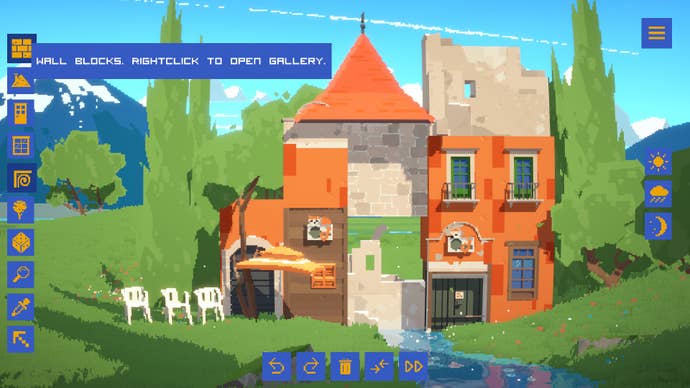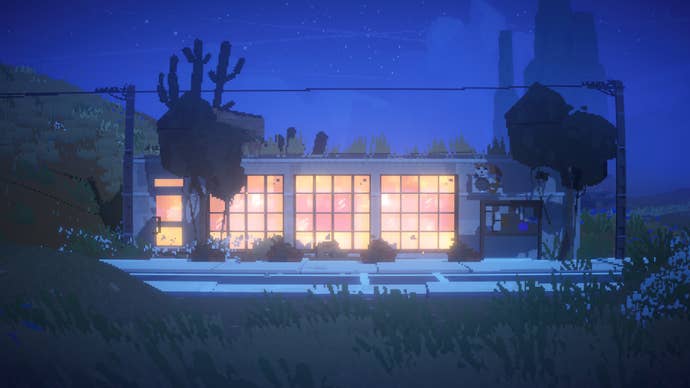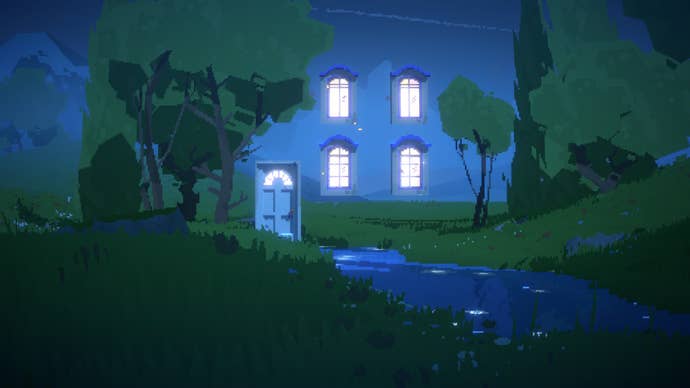Modern doors, ancient doors.
Doors of wood and doors of iron.
Doors that are perfectly kept up, doors that are leaning, addled, barely hanging in there.

Doors set with glass and doors set with grillwork.
The doors are great individually, but it’s together that they truly shine.
And it’s not just doors.

Oh, the doors are great.
Metal doors with an industrial feel, but also wooden double doors, perfect for an old junk shop.
A round Hobbit number - painted green, of course.

But there are windows, rooves, finials and oddments like signage, rattling drainpipes, posters and hoardings.
Fancy a polite little noticeboard?
Fancy a lone payphone set, lollipop-style, upon a stick?

Fancy trees and shrubs, wild and in pots?
Walls of stone, walls of wood.
Summerhouse is a toy.

A building toy, and more accurately a doodling toy.
Architecture by way of Magritte.
And it’s taken me a while to learn two things about it.

The first is that this is a uniquely peaceful game.
It does this in part because it all just works.
Placing, selecting, deleting: none of this is tricky.

It casts a cooling spell, Summerhouse, and I am grateful for it.
And I think the reason it does all this is because of the second thing.
It took an age for me to spot this, but you’re not really making new houses here.
You’re making old houses, sometimes dilapidated houses, houses that have been lived in and patched together.
You’re ready to open a hairdressers, a lockbox unit, a surprisingly brilliant deli.
Yes, all that.
So many games emerge.
She loves Summerhouse and loves to impose similar restrictions: Make a pagoda, but it’s just roofing.
Let’s both see what we can make in a minute only using guttering.
The whole thing is magic.